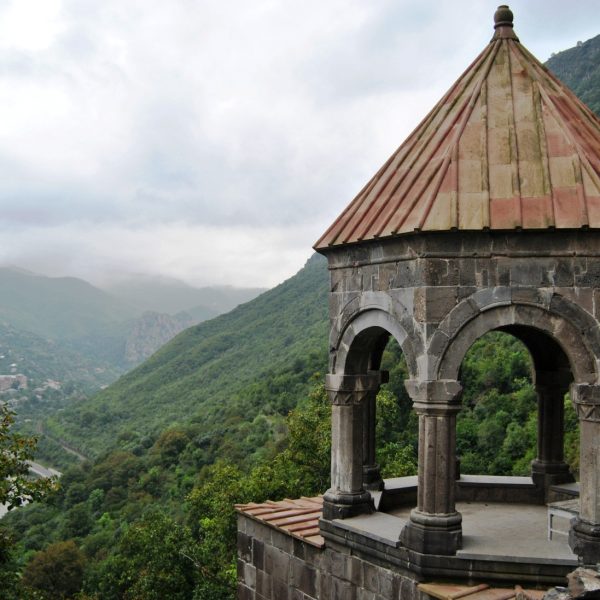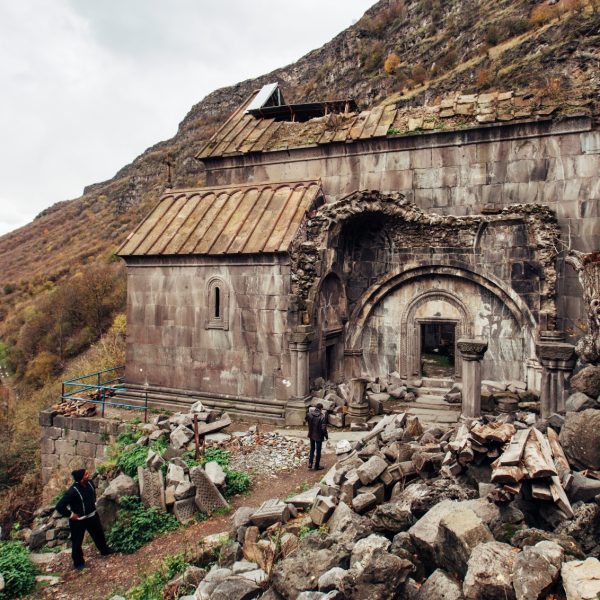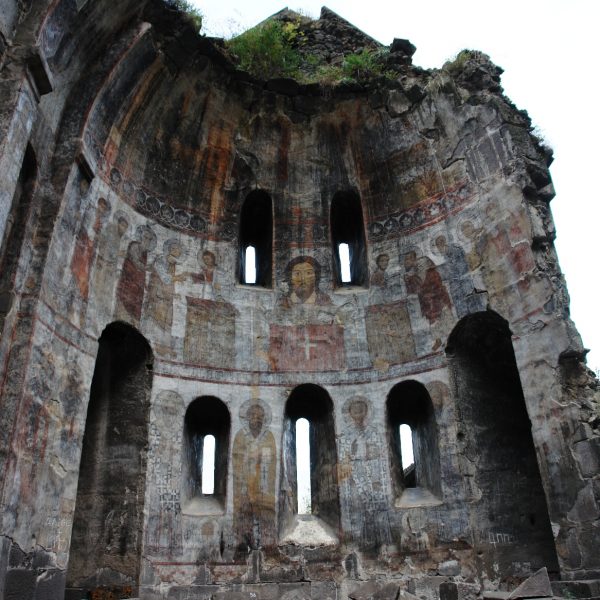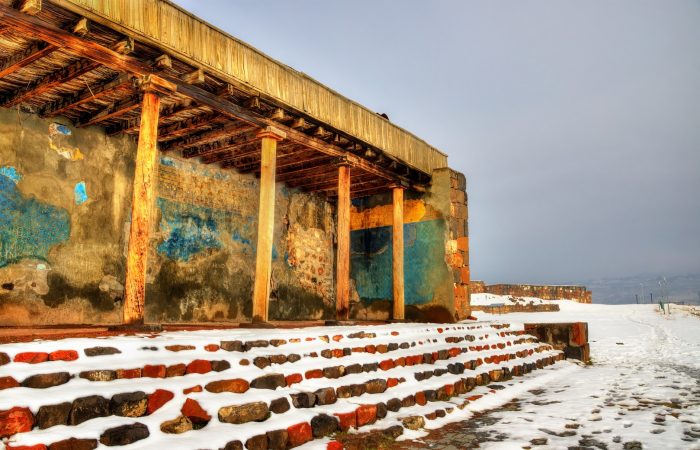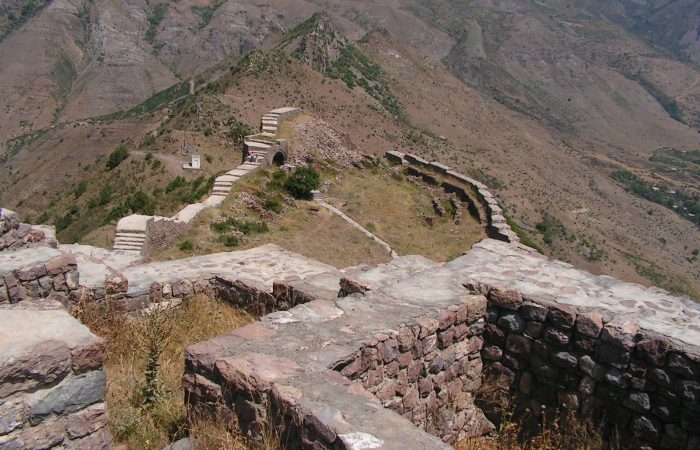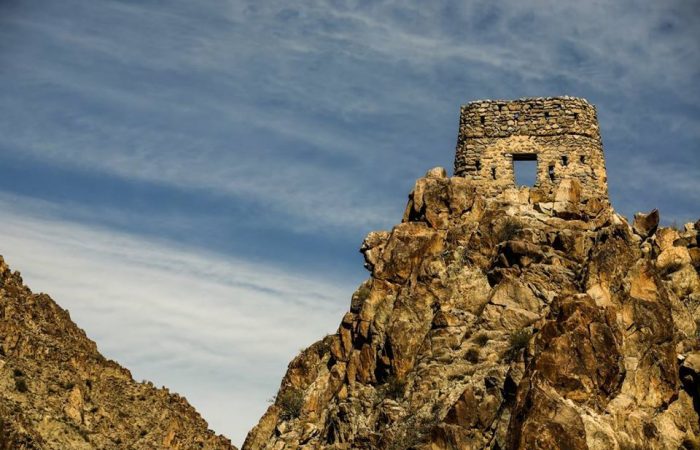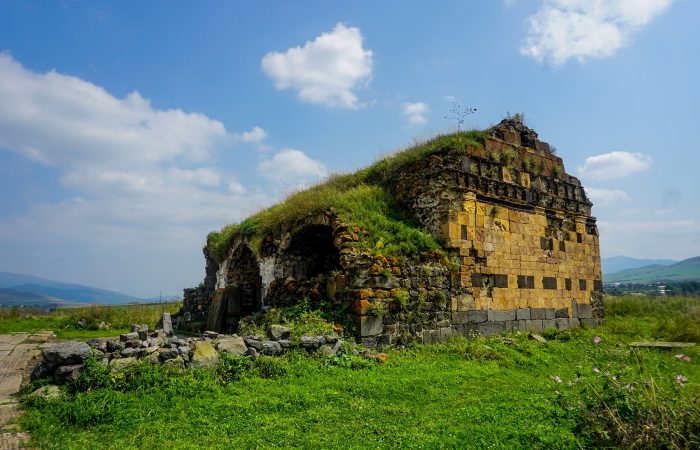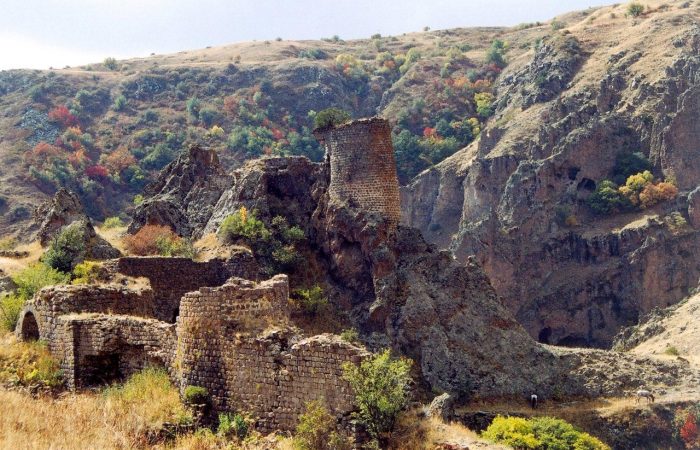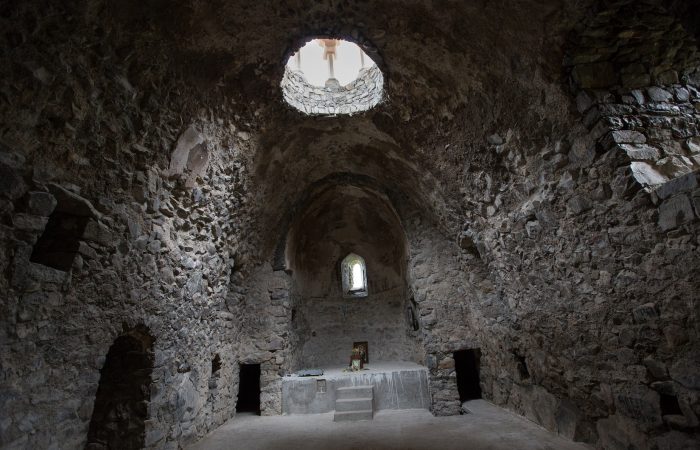Kobayr Monastery: General
Kobayr Monastery is located in Lori province. Findings dating to the Bronze and Iron Ages, and some to the Copper Age have been discovered in the territory on which the monastery can be found.
The name of the monastery has the following interpretation – Kobayr has the Georgian root “kob” and Armenian root “ayr.” The combination of the two roots made the name of the monastery, which simply means “cavern” in English. The naming is related to the dominating number of caverns all around.
Kobayr Monastery: History
The history of Kobayr Monastery is closely related to the most popular princely families of medieval Armenia, among them the Kyurikyans, Bagratunis and Zakaryans. In the 13th century the Zakaryans brought Chalcedonian Christianity to Armenia and new architectural style characteristic of it, which also included frescoes. Scribe David Kobayretsi (David of Kobayr) used to live and work in the monastery. Also, Vardan Areveltsi and other scribes mentioned that in the middle of the 13th century Kobayr was a significant cultural center.The main entrance resembles a tunnel.
Kobayr Monastery: Katoghike Church
The main church, Katoghike dates to the 12th century. It’s presently a partially ruined building the main entrance of which was once covered with carved frame, while the façade was decorated by a frieze with geometric patterns and rosettes. The single nave church is especially interesting due to the frescoes preserved until today.The frescoes come in three rows on the church’s apse. In the upper scene Virgin Mary and the archangels are depicted, in the middle – the Eucharist, and below it are the saints. The frescoes on the chapel have also been preserved. They as well come in three rows with the Jesus Christ on the top, the Eucharist in the middle and the saints below. The portraits of the sponsors can be found on the western wall and the lower northern row.
Kobayr Monastery: Mariamashen Church
To the east of the church of Katoghike, the small church of Mariamashen was erected. It as well is partially ruined and is the oldest preserved building of the monastery. An inscription at the entrance states it was built in 1171 by Princess Mariam who was the daughter of King Kyurikeh II. Note that the name of the church means “built by Mariam.”
Kobayr Monastery: Belfry-Sepulcher
To the north of Katoghike Church there is the belfry-sepulcher, which comes with a square layout completed with a wide apse in the east. According to an inscription (in Georgian) found on the southern wall, the construction of the belfry was ordered in 1279 by the son of amirspasalar (commander-in-chief) Shahnshah and his wife.
Kobayr Monastery: Refectory
The partially ruined refectory dating back to the 13th century can be found to the west of the belfry. It represents a rectangular hall from which only the walls and a part of the vaulted roof have survived.
Kobayr Monastery: 12th Century Church
To the north of the refectory there are the ruins of a 12th century church and a tunnel. Adjacent to the church there is a vaulted chapel.
So at a glance it might seem the monastery of Kobayr is but a ruined structure with not that much to tell you. While as you go in from the main entrance, you will have a unique opportunity to start your own explorations and to find the monastery’s partially ruined buildings, among them the above mentioned Katoghike Church, Mariamashen Church, belfry-sepulcher, refectory and of course, the 12the century church, which is basically called so.

